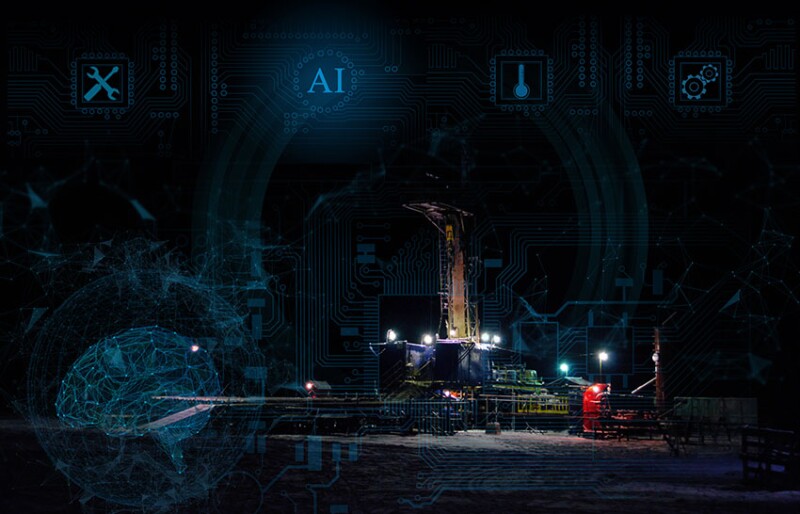Having had the privilege of living on three continents, working across multiple industries, and conducting business in several countries, I have seen the impact digital technology has on business, people, and communities. Throughout my career, I have witnessed lifesaving and life-changing digital innovation that changes the trajectory of organizations and industries. As someone who entered the workforce during the dot-com era with a background in computer science, I continue to be amazed by how yesterday’s differentiation becomes today’s necessity … and tomorrow’s obsolescence challenge.
The pace of innovation in digital is unprecedented in the annals of human innovation. Personally, I only need to look at my kids to get a sense of that. While we learned to ride a bicycle the same way despite a 3-decade gap, the way we communicate, interact, learn, and create is radically different, enabled by digital platforms that permeate every aspect of life. It is natural therefore to envision that the generations that grow up in these digitally enabled environments will expect, demand, and enable the same degree of digital connectivity in business as they come into and subsequently lead our industry.
Oil and gas is an industry that is not just impressive in size, scale, and scope. It is also a sector that deploys technology across the spectrum of breadth and depth. It is unique in that it enables the convergence of several technology domains, including mechanical, material science, hardware, software, automation, instrumentation, artificial intelligence (AI), and others. That, too, in some of the most extreme conditions of temperature, pressure, and accessibility on the planet.
Natural business drivers like operational efficiency have been complemented by workforce changes and sustainability agendas to enable this array of technological prowess. In the recent years, companies have leveraged digital as a competitive advantage. Digital technologies have enabled cost efficiencies, speed of operations, and safety enhancements. However, like in other sectors, there are fast followers as well as disruptors who can leapfrog advances. As a result, the industry is embracing digital technology as not just a differentiator, but as an enabler of innovation. The simple reality is that if one doesn’t, they risk being out of the game.
Generational Changes
One of the biggest drivers I see in the changes taking shape across our industry stems from a convergence of several shifts in the workforce. It is well known that the sector has an aging workforce, and the Great Crew Change is upon us. That, coupled with the fact that we are seeing labor shortages in some markets and that it has become increasingly harder to attract talent into this space, necessitates change. For example, in the post-COVID-19 pandemic era, we are seeing an increased desire to work from home vs. take on rotational work—the jobs that are based in the field are not as appealing as they were a generation ago. In addition, the incoming generation demands that large corporations do more to make a positive impact on the world. And they’re right. We have a duty to act responsibly, to improve quality of life, and reduce environmental impacts. We must think and act differently if we are going to continue competing for top talent—the type of talent that will continue revolutionizing the industry. So, what does that mean? From my perspective, there are a several key areas our industry must continue investing in.
Operational efficiency through LEAN workflows. An essential component of innovating is looking at your operating workflows and finding ways to improve upon them—keeping the customers’ needs front and center. Leveraging technology to improve the speed and efficiency of everyday activities such as equipment redeployment, inventory management, and fulfillment makes a sizeable impact when viewed over the long term. Ultimately, our goal is to get the best equipment and services to the field for our customers, deliver safe and quality operations, and yield the highest levels of production out of their assets as possible. This isn’t a case of taking the same approach with a rinse and repeat mindset. Instead, it is a cycle of constant reset, refresh, and rejuvenate.
Enabling well integrity and remote operations. Remote operations have been a game changer for the industry, and I think we are just getting started. The physics of constructing a well involves hundreds, if not thousands, of connections—each being a potential failure point which can compromise the integrity of the entire asset. Furthermore, manually making up so many connections can lead to complacency, which increases the risk of mistakes, injuries, or—even worse—fatalities. Outcomes such as these cost the industry billions as well as potentially its reputation. To eliminate these risks, we must continue to invest in mechanization, automation, and remote operations that are designed to get people out of the red zone while delivering predictable and verifiable outcomes. Investments like this today are what will ensure the sustainability of our industry tomorrow.
Better outcomes through AI decision making. The past several years have shown us just how quickly technology is advancing the industry. We live in a fast-paced and dynamic environment, and if you want to succeed you have to be adaptable. You have to be willing to take risks and be a pioneer. A mere 5 years ago, the idea of widespread AI usage in our personal and professional lives would have been incomprehensible to some. Now, it’s everywhere. Just look at your web browser or online shopping cart.
However, I firmly believe looking to the future doesn’t mean turning your back on your legacy. To the contrary, there is great power in harnessing your strengths and decades of experience in operations. The key is, you have to be open to turning things on their head and looking at challenges differently. That’s another area where I believe this change in the workforce landscape is actually working to our benefit. You have a combination of a wealth of knowledge and experience from your seasoned workforce and the fresh, different perspectives of a budding workforce combining to unlock new potential, such as harnessing AI to make decisions. Several companies are leveraging data, machine learning, and AI to predict what is going to happen subsurface and respond immediately—limiting exposure to personnel and the environment in the process.
Decarbonization Through Technology Integration and Optimization
The pathway to lower carbon, renewable energy, and a more sustainable world threads its way through the energy industry, and we take responsibility and pride that we can do our part in helping to deploy and scale lower-emissions technology. The focus areas I’ve touched on today— automation, remote operations, and digitalization—are all essential to the energy transition.
We must continue to revolutionize the oil and gas sector. Existing oil and gas production will continue to sustain the world’s overall energy needs, but we must accept the responsibility of actively seeking new methods to help reduce the industry’s carbon footprint and make all operations more efficient and sustainable by integrating products, services, and digital workflows. For example, we are applying existing technology in innovative ways and leveraging the expertise of our people to reduce the carbon intensity of our existing operations and also through carbon capture and sequestration solutions.
Better Customer Operational Outcomes Through Digital Data Mining
When I think about digital data mining, I am referring to pulling data from all parts of the asset lifecycle, correlating the data elements, finding commonalities, and delivering better insights on well dynamics, well integrity, and failure points. In our own portfolio, we drive this through production optimization, real-time drilling optimization, and intelligent managed-pressure drilling. Furthermore, data mining may also lead to better equipment reliability—optimizing when and how assets are serviced to ensure peak performance at optimal costs.
This is a common theme and a view shared by thought leaders in the industry. We’re all out here trying to do the right thing and make a positive impact. So, that means we must get creative. You can take any traditional oilfield operation and apply a digital methodology to it. In doing so, not only can you achieve improved drilling performance and enhanced safety, but also improved reservoir productivity. What we’re seeing is that wells previously deemed undrillable are becoming accessible through technology.
Optimizing Your Internal Business
Everything we have talked about to this point is about bringing value to the customer. The other part of the equation is delivering value to our shareholders. To do that, we need to optimize our business operations by delivering simplified cost structures, improved internal productivity, supply chain optimization, and more. This is where generative AI becomes essential as we move forward. As the adage goes, we need to work smarter and not harder—leveraging data to drive decision making. Through generative AI, we can make predictions about our operations and conduct testing scenarios of new business models before implementing them to define the most profitable outcomes for all.
Closing Thoughts
We must continue raising the bar and seeking opportunities for innovation. There are countless consumer-based examples of digitalization in other industries coming from a couple of progressive thinkers working out of their garage—think Silicon Valley. Digitalization has the power to upend industries and change the landscape for the better. Our industry faces similar challenges of disruption now, and we have the opportunity to be the disrupters. We have the opportunity to set the standard—so much so that other industries will emulate our actions. We don’t have to rely on someone else to come in and fix things. Instead, we need to drive positive change through partnership, our own innovations, and by leveraging decades of experience. If you haven’t already shifted your mindset on this, you risk sitting on the sidelines. So, who’s game?

Girish K. Saligram has served as the president and CEO of Weatherford since 2020. Prior to Weatherford, he held leadership roles at General Electric and Exterran Corp. He holds an MS in computer science and an MBA, and has worked across industry sectors and multiple countries.

